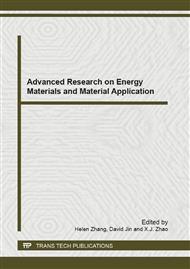p.170
p.175
p.179
p.183
p.187
p.191
p.197
p.202
p.206
Improvement of the Activity of Naringinase by Covalent Immobilization on Sodium Alginate in Biomaterial Engineering and its Applications
Abstract:
Naringinase using different methods to immobilize in alginate sodium have been studied. The results showed that adopting 3% sodium alginate as carrier and using the method of covalent immobilization through 2.0% glutaraldehyde were optimized. The retained activity of immobilized naringinase could reach 129.64% under optimal conditions. Moreover, the retained activity of immobilized naringinase increases with decreasing concentration of naringinase solution. This is a promising result of lowering production cost for future application of immobilized naringinase in biomaterial engineering. On seven consecutive repeated use of immobilized naringinase, 90% retained activity were observed. Michaelis constant (Km) and maximum reaction velocity (Vm) were calculated for the free and immobilized enzyme systems. Effects of temperature and pH on enzyme activity were estimated.
Info:
Periodical:
Pages:
187-190
Citation:
Online since:
October 2012
Authors:
Keywords:
Price:
Сopyright:
© 2012 Trans Tech Publications Ltd. All Rights Reserved
Share:
Citation:


